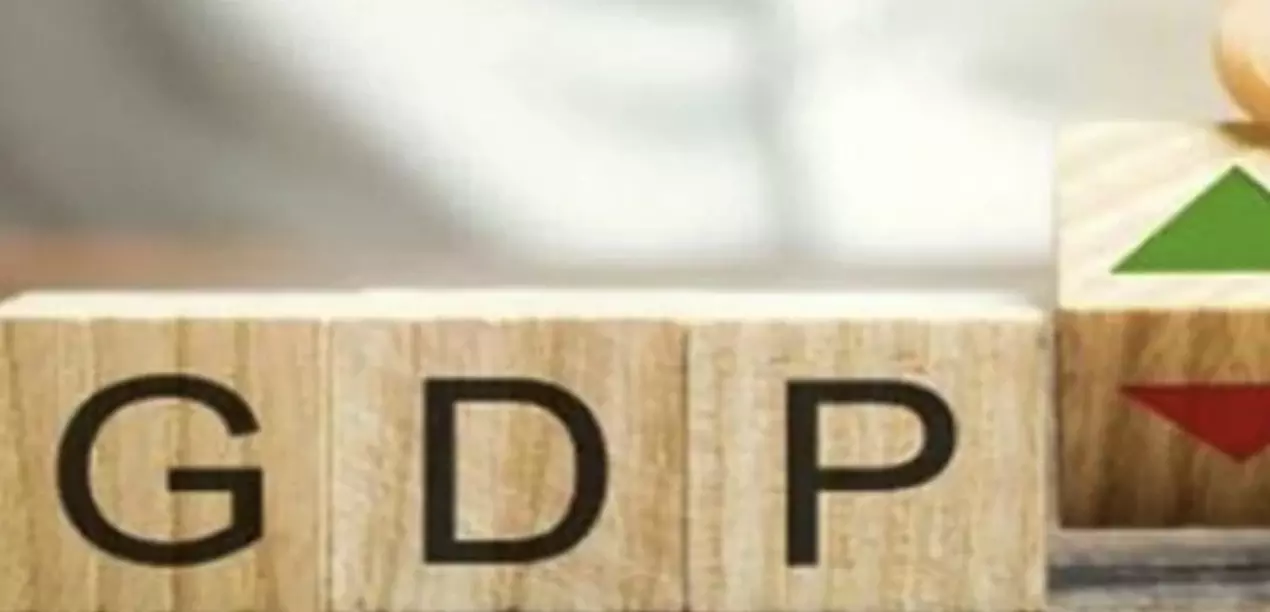India's GDP growth expected to fall to 6.4% in FY25, lowest in four years
India's GDP growth expected to fall to 6.4% in FY25, lowest in four years

India's economic growth is forecasted to drop to a four-year low of 6.4% in FY25, largely due to weak performance in the manufacturing and services sectors, according to government data released on Tuesday. This marks the lowest growth rate since 2020-21, when the country experienced a contraction of 5.8% due to the pandemic. In comparison, the GDP growth was 9.7% in 2021-22, 7% in 2022-23, and 8.2% in the fiscal year ending March 2024.
The National Statistics Office (NSO) released the first advance estimates of National Income for FY25, which are slightly below the Reserve Bank of India's December projection of 6.6% and the finance ministry's initial forecast of 6.5-7%. These advance estimates will play a role in shaping the upcoming Union Budget, set to be presented by Finance Minister Nirmala Sitharaman on February 1, 2025.
Economic growth slowed to a seven-quarter low of 5.4% in Q2 2024-25, following a 6.7% growth in Q1. The manufacturing sector is projected to grow by just 5.3%, a significant slowdown from 9.9% in the previous fiscal. The services sector, covering trade, hotels, transport, and communications, is expected to expand by 5.8%, down from 6.4% in FY24. However, the agriculture sector is showing positive growth, with an estimated rise of 3.8%, up from 1.4% in FY24.
The real GDP growth forecast for FY25 is 6.4%, a sharp decline from 8.2% in the provisional estimates for FY24. On a nominal basis, India's GDP is expected to grow by 9.7% to reach Rs 324.11 lakh crore, compared to Rs 295.36 lakh crore in the previous year. This puts the country's economy at an estimated size of USD 3.8 trillion, based on the exchange rate of Rs 85.7/USD.
Economists like Aditi Nayar, Chief Economist at Icra, suggest that while the projections for the second half of FY25 appear reasonable, sectoral growth may exceed expectations. She anticipates that GDP growth in FY26 will be crucially shaped by global and domestic uncertainties, with an estimated 6.5% growth, driven by anticipated capital expenditure in the Budget.
Dharmakirti Joshi, Chief Economist at Crisil, highlighted challenges in the urban economy, such as high inflation and slower credit growth, which may affect the recovery. Data from the Reserve Bank of India shows that consumer confidence in urban areas has dipped, and retail credit growth has slowed.
The NSO's data also reveals that the nominal Gross Value Added (GVA) is expected to grow by 9.3% to Rs 292.64 lakh crore, compared to Rs 267.62 lakh crore in FY24. Private Final Consumption Expenditure (PFCE) at constant prices has risen by 7.3%, up from 4% in the previous fiscal, while Government Final Consumption Expenditure (GFCE) has also seen a boost with a 4.1% growth rate.
In terms of individual earnings, the per capita income at current prices is projected to increase by 8.7%, reaching Rs 2,00,162 per year, compared to Rs 1,84,205 in the previous fiscal year.
These economic indicators will play a key role in shaping the fiscal outlook and government policy for the year ahead.
ChatGPT can make mistakes. Check important info.

